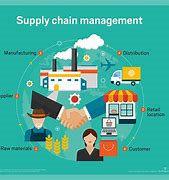What is Supply Chain Management (SCM)
- Posted on August 30, 2020
- Financial Terms
- By Glory

Supply chain management is the process of managing the flow of goods and services. It also includes the processes involved in transforming raw materials into finished products for distribution.
Supply chain management has been well defined by the APICS Dictionary as the “design, planning, execution, control, and monitoring of supply chain activities with the objective of creating net value, building a competitive infrastructure, leveraging worldwide logistics, synchronizing supply with demand and measuring performance globally.”
Supply Chain Management Explained
Supply chain management (SCM) involves all efforts put in place by suppliers to develop and implement efficient and economical supply chains. These supply chains include the whole processes of production, product development, and information systems required to direct undertakings.
Typically, supply chain management centrally controls the production, shipment, and distribution of products. An effective supply chain management enables companies to cut excesses in costs and get products to consumers faster. This is achieved by keeping check and control of internal production, inventories, distribution, sales, and inventories of company vendors.
A typical supply chain logistics consists of five parts and it is the supply chain manager who coordinates them.
The strategy or plan
The source (raw materials and/or services)
Manufacturing
Delivery and logistics
The return system (for faulty or unwanted products)
The work of the supply chain manager goes beyond purchasing inventory and logistics. It also involves making recommendations to enhance productivity and quality, and efficient operations, according to Salary.com.
Enhanced productivity and efficiency play a vital role in ensuring that a company’s bottom line performs better. A good SCM structure will always ensure that a company is out of news headlines and expensive lawsuits. A proper SCM can also help a company increase its revenues and decrease costs.
What is a supply chain?
A supply chain is a network of all the resources, individuals, companies, technologies, and activities included in the production and sale of a product or service. A typical supply chain starts with the supply of raw materials from a supplier to a manufacturer and ends with the delivery of the final product or service from a manufacturer to the end consumer.
Real-life Example of SCM
In 2016, Walgreens Boots Alliance Inc. restrategized on transforming its supply chain using the SCM strategy. The company needed to restructure its supply chain to enable it to stay ahead of the competition and keep in step with changing trends, while continually adding value to its bottom line.
To revise its supply chain, Walgreens started with investing in the technology portion of its supply chain. The company also implemented a type of SCM that synthesizes relevant data and uses analytics to predict customer purchase behavior, working its way back to the supply chain to meet the expected demand.


Be the first to comment!
You must login to comment